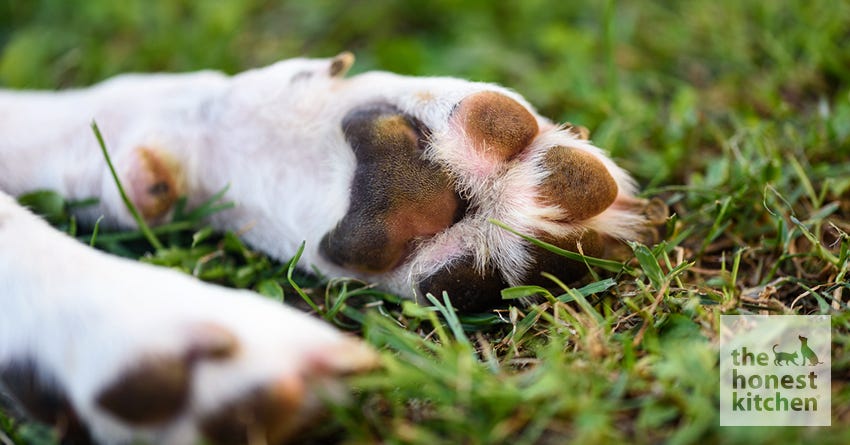When Your Dog Hurts his Paw

My six-year-old English Shepherd, Bones, is a hardcore athlete.
He plays hard, runs hard, and works hard. I don't make him do these things; it's just his nature. He's happiest when pushing himself. Unfortunately, his temperament means that sometimes he hurts himself and his paws bear the brunt of the wear and tear. He has scuffed his pads, taking the outer layer of skin off. He's cut his pads, worn down his toenails, broken toenails, and ripped his dew claws on more than one occasion. As a result, I've gotten pretty good at evaluating paw injuries and learned when to rush to the veterinarian right away, when I can wait until the next day, and what can be treated at home.Determining That He's Hurt
Dogs have individual pain responses when a paw is hurt. Whereas Bones one day walked around on the concrete patio leaving bloody paw prints, without a hint of a limp, my youngest dog, Hero, in the same situation would be flat on his back, paw in the air, completely broken. As much as possible, learn to recognize even the subtle signs your dog may give when he's hurt. Although the bloody paw prints was a dead give away Bones was hurt, of course, so was the pacing. He wouldn't settle down. I also give my dogs a good examination every night, especially if they've had a busy day. I check over the entire dog, looking for cuts and scrapes, burrs, foxtails, fleas, and ticks—but I also pay particular attention to their paws. This way I can find even small wounds that may not be giving them any issues.Evaluating the Wound
Once I've found the problem, no matter whether it's a cut pad or a broken toenail, my next step is to see exactly what has happened and how bad it is. This helps me determine whether I can handle it at home or if I need to call the veterinarian. Plus, when I need to call the vet, the more information I can give him, the better. Here are some questions to keep in mind as you evaluate the injury:- With a toenail or dewclaw, is the toenail broken down into the quick? Is the toenail gone; ripped from the nail bed? Is a piece of the toenail ripped but hanging?
- With his pads, is one pad scuffed but not bleeding? Is a layer of skin peeled up but is still hanging on? Is the pad cut down into the underlying tissues?
- Is the injury between the pads? On the top of the paw? Or does it feel like he may have hurt a toe, breaking a bone or twisting something?
- And last, is his paw bleeding? If so how much? Is it swollen?
 ©istockphoto/skynesher
©istockphoto/skynesher

